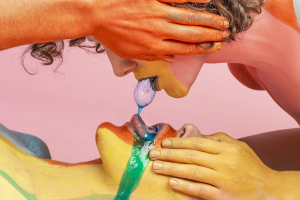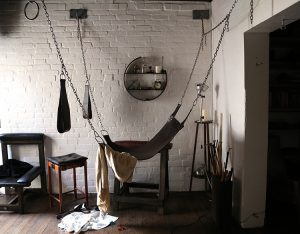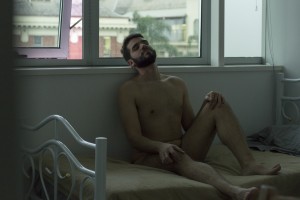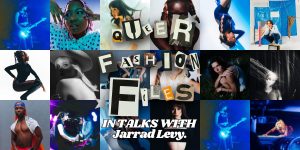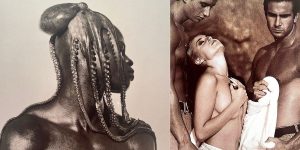Queerness, photography and sensuality: A Q&A with Wondra
By: Daddy Doe

Wondra (they/them) is a non-binary, unapologetically queer photographer currently residing in Southeast Portland, USA. In this interview, originally published in Archer Magazine #17, the HOME issue, Wondra talks to Daddy Doe.
DADDY DOE: Photographers rarely get in front of a camera. What inspired you to take self- portraits and what do you get out of taking them?
WONDRA: Self-portraits are some of my absolute favourites since they’re actually how I began my photography journey. At 15 years old, I was a pretty shy kid and felt intimidated to ask other people to model for me, so I learned how to use the self-timer and photograph myself.
There was this antique lamp that I liked to play around with in my photos; I remember experimenting with shadows from that lamp and the window in my childhood bedroom. Since then, my self-portraits have really evolved into a special way for me to heal and explore so many parts of myself. I’d highly recommend that any photographer give self-portraits a shot.
All images: Wondra


DD: Do you have any artistic rituals for yourself before a shoot?
W: I think rituals outside of photography are very important to me before going into a photoshoot during the day. Waking up, drinking some coffee and then lifting or going rock climbing for an hour in the morning feels really good for my brain. Doing things with my hands and moving my body tends to put me in the right head- space to create and be artistic.
DD: You photograph self-portraits and photographs of others in your home for a lot of your work. Most recently, that included a self-portrait series taken during your trip to Minnesota, where you grew up. Tell us about the connection to home that is woven through your work.
W: Minneapolis will always feel like home away from home to me. I miss my friends out there so much, and visiting always feels bittersweet.
Home has a different meaning for everyone, but for me, home is the people I love. Home also feels like the connection I have to myself and my body, though it doesn’t always feel that way. My hope is that this is translated into my self-portrait work.


DD: How do you find a way to connect with people you’ve just met when you’re photographing them?
W: I love getting to know people and photographing them in a way that they’d like to be perceived. This can indeed be challenging to do with someone I just met!
Something that has helped me through this process is inviting a conversation around why they are wanting a photoshoot, what themes they like and what about my work they were drawn to.
DD: How has your journey with self-exploration and identity evolved over time through your photography?
W: Constantly evolving! My self-portraits help me explore my identity, but meeting, creating and connecting with other queers does too – tremendously. I find that I’m always learning more about myself through photography and this community.


DD: I’m a queer person of colour, and exploring my eroticism, sensuality and kinks in a safe space has been hard to do, so I’m selective about who I explore those things with. The comments from the people you work with indicate that you collaboratively explore these spaces, safely and respectfully. Could you tell us about this process?
W: Communication is so incredibly important – for all photoshoots really, but especially for the more kink-related ones. For these photoshoots, I will talk with the person(s) I’m photographing about what activities they will be doing during the photoshoot, so everyone involved knows what to expect and there are no surprises. It’s crucial that everyone involved knows that anyone present at the photoshoot is able to stop at any moment – for any reason.
If I’m photographing someone who is modelling solo, I will usually suggest they invite someone close to them to the photoshoot. I think bringing a buddy is good practice for anybody at any photoshoot with any photographer.
Also, it’s really great to research photographers! If you’re wanting to shoot with someone you haven’t worked with before, reaching out to models they’ve photographed can be really helpful and insightful.


DD: You have an incredible talent for capturing a moment in your photography. How do you know when it’s the right moment?
W: Such a compliment! Thank you! Movement is one of my favourite ways to capture an image. I offer as much or as little guidance as my model wants or feels comfortable with. This can involve them moving around freely, or I might pose them in a more exact way and then ask them to make smaller, more localised movements like moving their fingers, arms, head, etc.
DD: We’d love to hear about one of your most fulfilling collaborations.
W: My work with Trista Marie McGovern, most definitely! Trista is a good friend of mine from Minneapolis who is a disability advocate, writer and photographer. I had the privilege of doing a series of photoshoots with her that she coordinated, exploring disability and sexuality. She compiled them all into a book paired with her writing and prose and it’s absolutely beautiful. Her book is called Where Shame Dies.
DD: What is the message you hope to share with people who experience your work?
W: It’s important to me that people feel the queer love and joy in my work. It’s also important that people are able to see themselves in my work. I don’t photograph one certain type of person and I want that to be reflected in my portfolio. I want people to feel included and welcome to work with me.


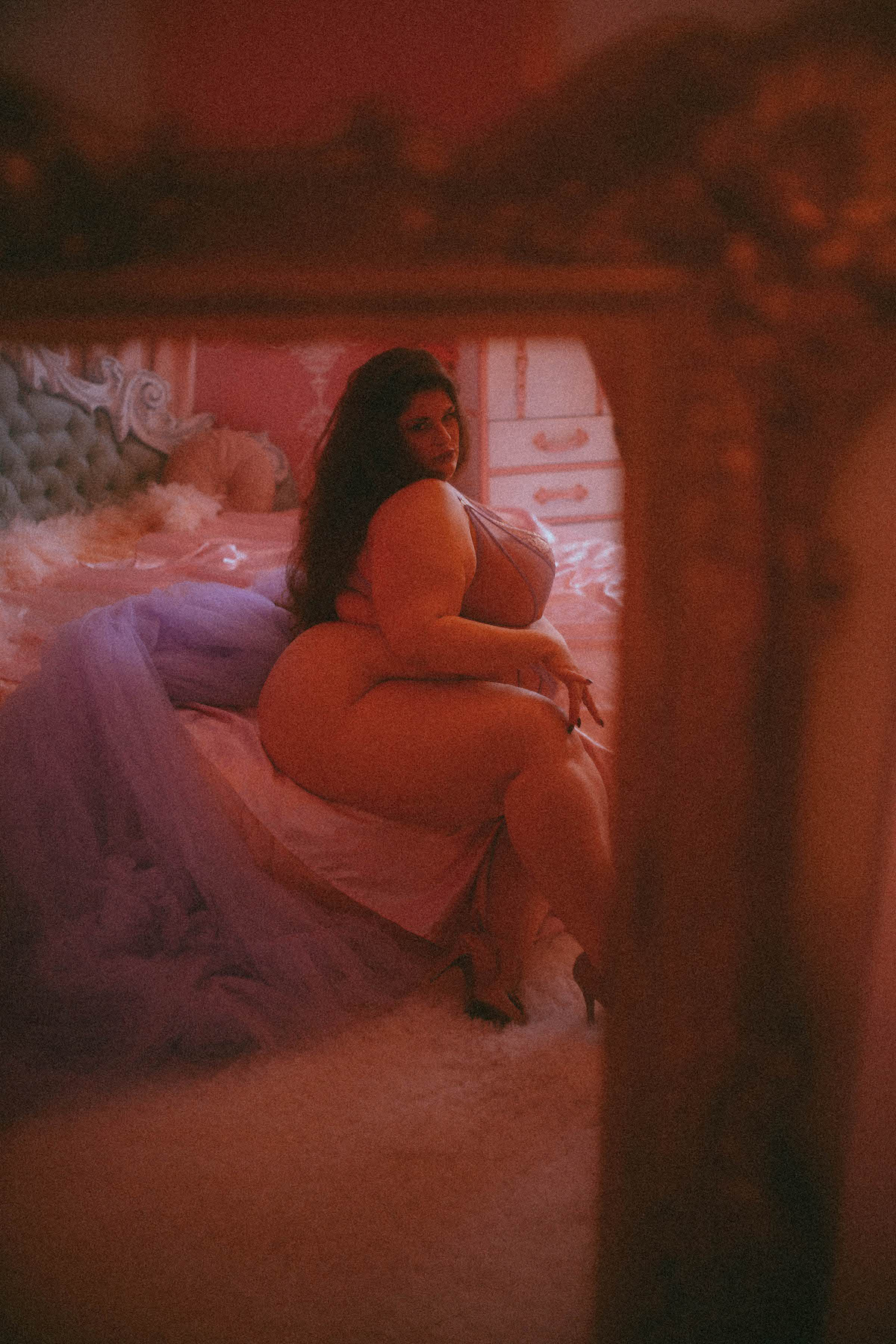
This article first appeared in Archer Magazine #17, the HOME issue.
Wondra (they/them) is a non-binary, unapologetically queer photographer currently residing in Southeast Portland, USA. Their passion is meeting new people and creating ethereal, thought-invoking and empowering art through photography. A firm believer of strength in vulnerability, Wondra loves creating a raw and emotive viewfinder between two realities while making humans feel beautiful and seen. Primarily, their photoshoots take place out of their home studio and spacious backyard, and they are able to create a unique world through their dream-like images. Their work has been featured in Vogue Italia, Pornceptual, DSCVRD, Stereogum, Gothesque Magazine, The Mighty, Causette, Our Culture, Marie Claire, Enorm Magazine, Femme Rebelle Magazine, Elegant Magazine, Dark Beauty, IMIRAGEmagazine, Girlgaze, Feministand more.
DADDY DOE is an artist, performer and mentor with over 10 years experience in her fields. Her passions are activism, movement, art and erotica. When Daddy is off the clock, she ends up working on creative projects because she just can’t help it, constantly trying to find the balance of artist to self.



